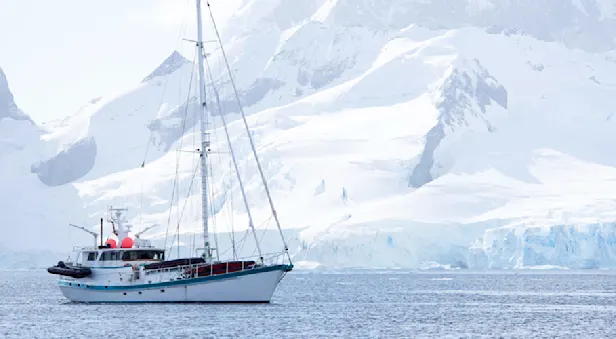
Know Before You Go
Royal Albatross Facts | New Zealand Wildlife Guide
The royal albatross (Diomedea epomophora sanfordi) is the world’s largest seabird and the most spectacular flying visitor to the Otago Peninsula in New Zealand.
Physical Characteristics
An enormous bird, which measures almost 4 feet in height and has a wingspan of 11.5 feet.
The body of the northern species is white with completely black upper wings.
Southern birds have more white in their coloration.
The feet of both species are generally pink, and the bill is flesh-colored, with a diagnostic black cutting edge to the upper mandible.
Behavior
Catching sight of a majestic albatross as they glide above the waves is an unforgettable sight. Upheld by narrow, expansive wings, the albatross flies an estimated 118,000 miles per year and is capable of swooping speeds of at least 70 miles per hour. Despite its gracefulness in the air, this bird is actually distinctly clumsy on the ground. The albatross has a wide range, circumnavigating the earth and spending days at a time in the air. Its effortless glide allows it to spend 90 percent of its life above water. Non-breeding birds wander throughout the southern oceans, many reaching South America and Southern Africa.
Feeding Habits
Royal albatrosses feed by searching the sea surface for dead or shoaling fish and squid. In addition, many albatrosses will follow fishing boats in hopes of feeding on fish bait and bycatch. Typically, they easily snatch up scraps but will periodically become caught on a fishing hook and drown.
Breeding
Taiaroa Head on the South Island of New Zealand is home to the world’s only mainland colony of royal albatross. Here, the courtship of the royal albatross occurs with much “kissing” and “cuddling” between birds. Once established, pairs will remain together for life, despite long separations at sea.
Royal albatross pairs raise one chick every two years. The birds mate during September at breeding colonies in Taiaroa Head. Females construct nests on the headland in early November by using their bill to gather plant material and soil around them. Soon, they lay a single white egg, which weighs up to 1 pound. Both sexes incubate the egg for 11 weeks—one of the lengthiest incubations of all birds. Parents alternate these duties every two to eight days and often sleep while resting on their egg.
Between late January and early February, the chick emerges from the egg after breaking a hole in the shell, a process that can take between three and six days. Parents take turns feeding and guarding the newly hatched chick. During the first 20 days, chicks are fed at their whim until meals are reduced to three to four times a week. After 100 days, the young are covered in over four-and-a-half inches of fluffy down, and they begin to eat more substantial and solid meals of up to 4 pounds of food. As the young approach fledging, they are fed smaller and smaller portions until they take flight in September. Almost a full year after the adults’ arrival at Taiaroa Head, the parents depart to spend a year on the open ocean before returning to mate once more.
Juvenile royals remain at sea for three to six years and many return to Taiaroa Head to breed once they become sexually mature at 6 years old. Royal albatrosses live, on average, until about age 42. One female in Taiaroa Head, fondly referred to as “Grandma,” was found to be raising a chick at the age of 62!
Conservation
The long line fishing methods of Asian and Russian fleets in southern waters threaten these birds. Chicks ingest plastic in their diet from polluted oceans, which leave them in a weakened condition. While albatrosses living on isolated, stormy islands remain quite protected from the outside world, those who nest near human populations face a number of threats. Near cities, dogs, cats, stoats, rats and ferrets prey upon these seabirds and their young. Rabbits upheave soil and leave sparse vegetation, and fires pose a risk to the nesting sites. The establishment of protected nesting areas, fenced off from the public and patrolled by local field staff, has largely diminished these problems.
Header Credit: Ed Dunens (CC BY 2.0) via Flickr
See Albatrosses on These Expeditions

Sailing Antarctica: A Polar Wildlife Expedition
Those with a passion for true adventure won't find a more exhilarating thrill than exploring Antarctica on an intimate voyage by private motorsailer—for just seven guests! Kayak and camp on the ice, too.

























